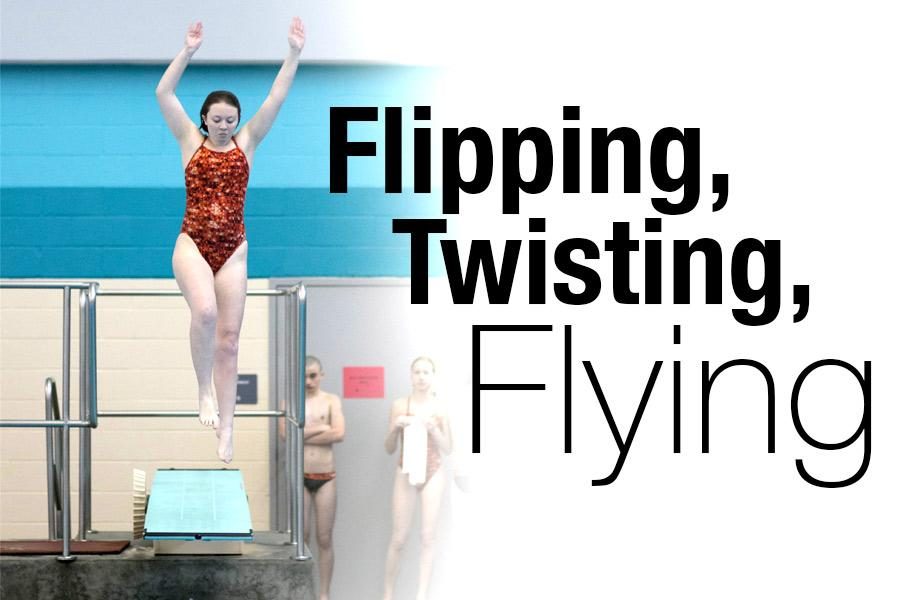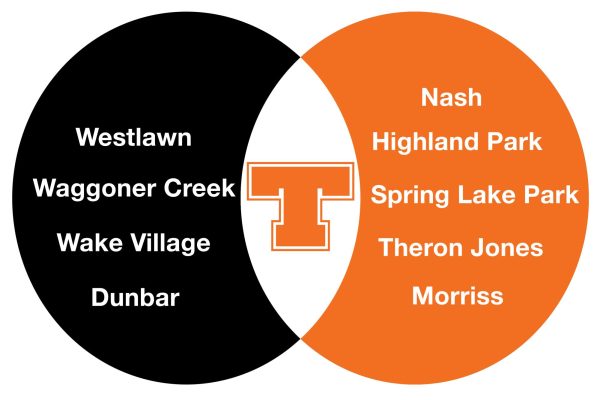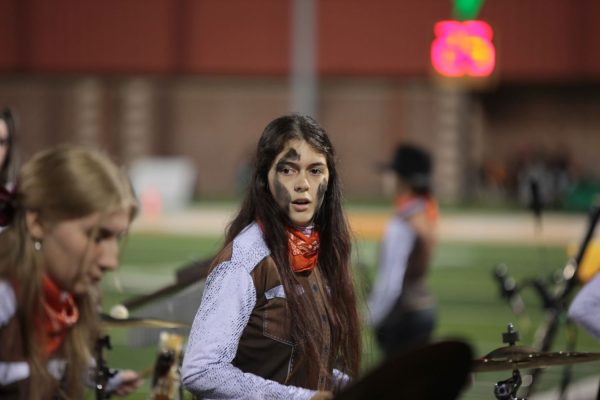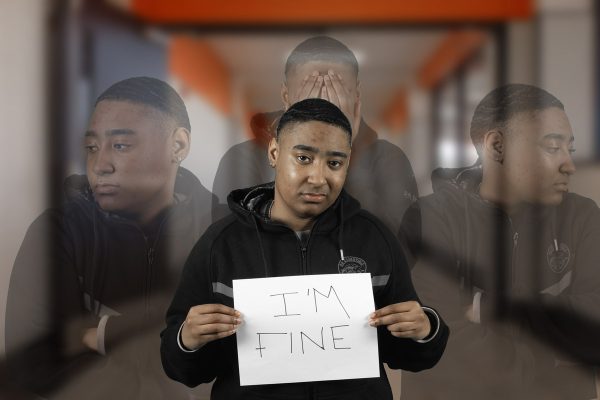It’s not all flips and giggles
Junior describes what it’s like to be a diver
Lauren Potter prepares to throw a dive at the Regional competition.
February 24, 2016
As a sport at Texas High, I feel like diving is underrated. It’s more known as a blowoff class that you get into for your PE credit than the intensity it entails.
There is so much that goes into the sport— there is a lot of flipping and twisting, ab workouts and of course, millions of belly and back flops.
In diving, there are five different types of dives that you have to do: forward, inward, back, reverse and twisters. Usually when you begin diving you start off with forwards, because it’s the easiest to grasp. Then back, inward, reverse and finally twisters. Reverse is generally the hardest to understand and mentally difficult to do, but once you get them all down, you might find that the dives that seem the easiest might become the hardest.
Diving is more mental than physical. You have to have body awareness and be able to do things that make no sense. For example, when flipping you have throw with only your arms and keep your head up, which actually sounds really easy, but let me tell you I’ve been diving for two years and I still can’t get that down.
Not only does it seem to defy all things that you’re taught in physics, when you can’t get a dive you smack, and even when you’ve done a dive hundreds of times you still smack on them from time to time. Or even you get on the board throw it perfectly, then get up there throw it again, everything that could go wrong does. You end up flat on your back with welts and bruises everywhere and a stinging that seems like it will never go away. It’s truly awful, but of course you have to get up there and do it again and pray to Jesus that you won’t have to experience that god awful stinging again. But it always comes back.
As a diver, I always get told by the swimmers that we don’t do anything and that we have it so easy and that we get a free ride to State, which is not at all true.
We arrive every morning before school at the pool at 6:15, practice until seven, and then get ready for school, and then after fourth period, we go back to the pool and work on our dives until whenever we finish. We also do a lot of work in the belt, which is a harness we use to spot dives. We have two belts, one over the diving boards used when we are in the water, and the other over the trampoline for when we do dry land. The belt over the water is mainly used as a confidence booster for the first time you do a hard or scary dive. We use the belt on the trampoline to work on dives that we aren’t ready to take to the water yet.
I’d have to say out of the sports offered here, diving is extremely underappreciated. At most meets we usually place pretty high. At District and Regionals we all usually place top three and at State, we usually rank top ten.
Diving and I have a love-hate relationship. It sucks a lot, but telling people I can do multiple flips in all different directions makes me feel really talented is one of its few perks.
Even though diving is painful and hard the majority of the time, I don’t regret joining the team and beginning to dive. Diving has become a big part of my life and I can’t imagine myself without it.





















